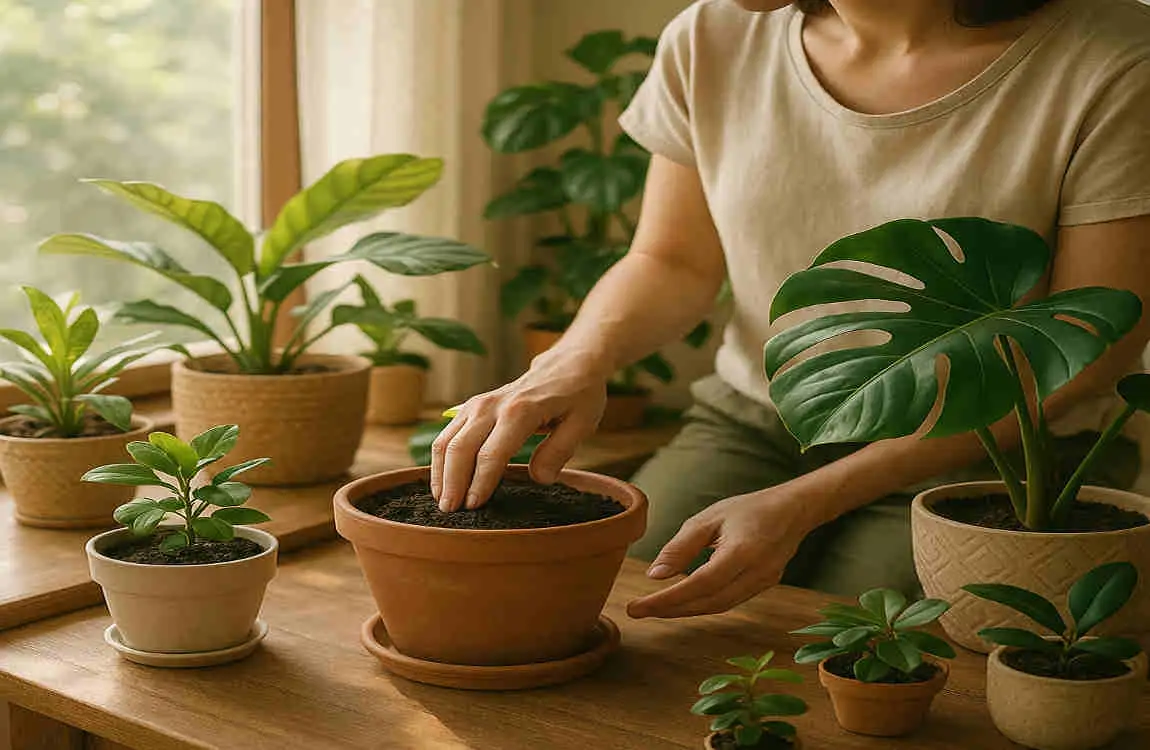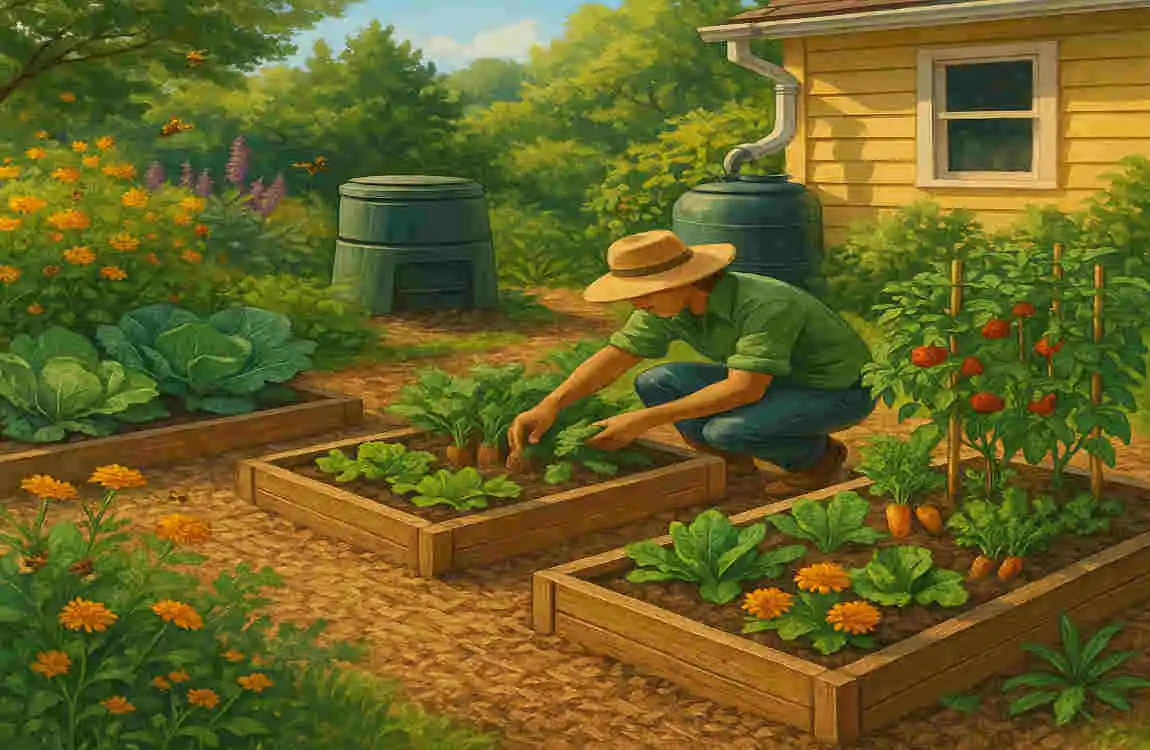In recent years, home gardening has blossomed into more than just a leisurely weekend hobby. From city balconies to sprawling suburban yards, people everywhere are digging in—literally. This trend isn’t just about creating beautiful spaces or growing fresh tomatoes for the dinner table; it’s about cultivating a deeper connection with the natural world. The purpose of house gardening now extends far beyond aesthetics or homegrown produce. At its core, home gardening is emerging as a powerful tool for promoting environmental health.
Why is this shift happening? As concerns about climate change, biodiversity loss, and resource depletion grow, many are searching for practical ways to make a positive impact. Home gardens align perfectly with these sustainable living trends. They’re not just pretty patches of green—they’re micro-ecosystems that support cleaner air, healthier soils, and thriving wildlife right where we live. In fact, your small backyard plot could play a big role in the fight for a healthier planet.
The Core Purpose of House Gardening

Evolving Beyond Tradition
Traditionally, the purpose of house gardening revolved around beautifying homes and growing food. Many of us remember our parents or grandparents tending roses, tomatoes, or simple lawns. These gardens were personal sanctuaries and sources of pride. But today, gardening is undergoing a transformation.
Shifting Towards Environmental Awareness
Modern gardeners are increasingly aware of their impact on the planet. People now choose plants that support pollinators, conserve water, and help fight climate change. This shift reflects a growing awareness that our actions, no matter how small, have a profound and lasting impact. Gardening with the environment in mind has become a guiding principle for many.
Environmental Health at the Centre
At its heart, the new house gardening purpose is about nurturing the environment. Gardens act as tiny green lungs for our neighbourhoods, filtering the air and cooling our surroundings. They create havens for wildlife and help restore natural cycles that have been disrupted by urban development.
Social and Economic Ripple Effects
But the benefits don’t stop at the garden gate. Home gardens can:
- Strengthen community bonds by bringing neighbours together.
- Boost local economies through seed swaps, farmers’ markets, and gardening services.
- Promote food security by growing fruits and vegetables close to home.
In short, the modern house gardening purpose is a blend of beauty, bounty, and stewardship—a way to care for both our immediate surroundings and the broader world.
How Home Gardens Enhance Environmental Health
Carbon Footprint Reduction
You may also read (how can i build a pallet bar house with a roof).
One of the most compelling environmental benefits of home gardening is its potential to reduce your carbon footprint.
- Cutting Food Transportation: When you harvest salad greens or herbs from your backyard, you’re eliminating the need for long-distance shipping. This avoids the emissions from trucks, planes, and packaging that come with supermarket produce.
- Lowering Greenhouse Gases: Commercial agriculture is a major source of greenhouse gases, primarily from synthetic fertilisers and fuel-intensive machinery. Home gardens that rely on organic practices sidestep these emissions.
- Carbon Sequestration: Plants naturally absorb carbon dioxide from the air. Even a small garden, with its mix of shrubs, trees, and groundcovers, acts as a miniature carbon sink—especially if you maintain healthy, living soil.
Key takeaway: Every home garden is a small but mighty ally in the fight against climate change.
Biodiversity Preservation
Modern landscapes often feature sterile lawns and limited plant choices. Home gardens, by contrast, can be vibrant tapestries that support life.
- Habitats for Wildlife: Diverse plantings attract bees, butterflies, birds, and beneficial insects. These creatures pollinate plants, control pests naturally, and contribute to a healthy ecosystem.
- Maintaining Local Ecosystems: Home gardens filled with native plants mirror the local environment, supporting species that may be struggling elsewhere.
- Reducing Chemical Use: By welcoming beneficial insects and birds, gardeners can rely less on synthetic pesticides, which are often harmful to the environment.
Did you know? A single garden can host dozens of pollinator species, making a real difference for declining populations.
Water Conservation
Water is a precious resource, and sustainable home gardens use it wisely.
- Efficient Irrigation: Techniques such as drip irrigation and soaker hoses deliver water directly to plant roots, minimising water waste.
- Rainwater Harvesting: Collecting rainwater in barrels or tanks reduces demand on municipal supplies and ensures plants get natural, untreated water.
- Drought-Resistant Plants: Choosing plants adapted to your local climate means less watering and more resilience in dry periods.
Comparison Table: Water Use in Home Gardens vs. Conventional Agriculture
Practice Home Garden (per sq. ft.)Industrial Farm (per sq. ft.)
Drip Irrigation 0.5 gallons 1.2 gallons
Overhead Sprinklers 1.0 gallons 2.0 gallons
Rainwater Harvesting 0 gallons (saves water) Not commonly used
Use of Drought-Resistant Plants 0.3 gallons Rarely implemented
Source: Adapted from various sustainability research studies
Soil Health and Waste Reduction
Healthy soil is the foundation of any thriving garden—and a key to environmental health.
- Composting: Turning kitchen scraps and garden waste into compost feeds the soil, reduces landfill waste, and cuts methane emissions, a potent greenhouse gas.
- Nutrient Cycling: Compost and organic matter boost the soil’s ability to store carbon and nutrients, creating a self-sustaining ecosystem.
- Beneficial Microorganisms: Organic gardening practices encourage a rich soil microbiome, which supports plant health and further reduces the need for chemicals.
Quick list: How to enrich your soil naturally
- Add compost regularly.
- Plant cover crops (like clover or vetch).
- Rotate your crops to prevent nutrient depletion.
Mitigating Urban Heat and Enhancing Air Quality
Cities and suburbs are notorious for their “heat island” effect, where the use of concrete and asphalt traps heat. Home gardens offer a simple solution.
- Cooling the Environment: Plants transpire—release water vapour—which cools the air. Shrubs, trees, and even ground covers lower local temperatures, making your home and neighbourhood more comfortable.
- Filtering Air: Leaves trap dust and pollutants, while plant roots can help break down toxins in the soil. The result? Cleaner, fresher air for everyone.
Fact: Research shows that even small gardens can reduce surface temperatures by up to 2°C (about 3.5°F) compared to bare soil or paved areas. (Source)
The Broader Environmental and Social Impact of Home Gardens
Building Resilient Communities
When many households invest in urban gardening for sustainability, the effects multiply. Neighbourhoods become greener, more self-sufficient, and better equipped to withstand shocks such as heatwaves or supply chain disruptions.
- Food Security: Growing even a portion of your own food reduces dependency on distant sources and helps buffer against shortages or price spikes.
- Reducing Food Waste: Gardeners often harvest only what they need, cutting down on spoilage and waste compared to store-bought produce.
Supporting Urban Sustainability
Home gardens can transform cities and suburbs into healthier, more livable spaces.
- Green Corridors: Clusters of gardens connect parks, street trees, and wild spaces, giving wildlife safe passage through developed areas.
- Stormwater Management: Gardens absorb rainwater, reducing runoff that can flood streets and overwhelm city sewers.
Climate Change Mitigation at Scale
Imagine if every city block had a few lush gardens. The collective impact could be enormous: lower greenhouse gas emissions, cooler streets, and abundant habitats for pollinators and birds. By participating in house gardening as a means of climate action, you join a grassroots movement for tangible climate action.
You may also read (diy guide cleaning moss from your house roof).
Mental Health and Environmental Stewardship
Tending a garden doesn’t just help the planet—it also helps people.
- Stress Reduction: Studies show that gardening lowers cortisol (the stress hormone) and boosts feelings of well-being.
- Connection to Nature: When people care for plants, they’re more likely to act as responsible stewards of the environment.
- Community Engagement: Sharing tips, seeds, or extra veggies with neighbours fosters a sense of belonging and shared purpose.
List: How Home Gardens Build Stronger Communities
- Encourage neighbourly interaction through plant swaps and shared gardening projects.
- Provide learning opportunities for children and adults alike.
- Serve as platforms for community-supported agriculture or local food movements.
Practical Tips to Maximise the Environmental Benefits of Your Home Garden

Organic and Chemical-Free Gardening
Whenever possible, avoid synthetic pesticides and fertilisers. Instead, use natural alternatives like neem oil, insecticidal soap, or homemade compost. This protects beneficial insects and keeps soil and water clean.
Plant Native Species and Diversify
Select plants that thrive in your local climate and soil conditions. Native species require less water and maintenance, and they’re best suited to support local wildlife. Mix in a variety of flowers, herbs, and vegetables to create a resilient ecosystem.
Water-Saving Techniques
- Drip Irrigation: Delivers water right to the roots, minimising evaporation.
- Mulching: A thick layer of mulch retains soil moisture, suppresses weeds, and adds nutrients as it breaks down.
- Rainwater Harvesting: Collect rainwater from your roof in barrels to use for watering your garden.
Composting Organic Waste
Start a simple backyard compost pile or bin. Add kitchen scraps (such as vegetable peels and coffee grounds), garden trimmings, and leaves. Avoid meat, dairy, and oily foods to prevent odours and pests. Finished compost feeds your garden and keeps waste out of landfills.
Responsible Fertiliser and Waste Management
- Use natural amendments like bone meal, rock phosphate, or seaweed extract sparingly.
- Test your soil before adding nutrients—over-fertilising can harm plants and pollute waterways.
- Recycle or upcycle garden waste creatively (e.g., use pruned branches to create pathways).
Checklist: Eco-Friendly Gardening Practices
- [ ] Use organic pest control methods.
- [ ] Plant a mix of native and adaptive species.
- [ ] Mulch beds to save water.
- [ ] Compost all plant-based waste.
- [ ] Test soil before fertilising.
Overcoming Challenges & Misconceptions about Home Gardening’s Environmental Impact
Addressing Common Concerns
Some worry that home gardening might do more harm than good if not managed wisely. For example, excessive fertiliser use can lead to water pollution, and poorly maintained compost piles may emit greenhouse gases.
Solutions and Best Practices
- Compost Right: Turn your compost regularly and keep it moist to ensure efficient decomposition and minimal methane release.
- Use Fertilisers Sparingly: More is not always better. Follow the package instructions or, even better, use homemade compost to feed your soil.
- Choose Sustainable Materials: Opt for pots made from sustainable materials and avoid synthetic mulches. Opt for biodegradable or recycled options.
Keeping House Gardening Purpose Aligned with Environmental Health
Being mindful and informed is key. Stay curious, keep learning, and share your knowledge with neighbours. When you garden with intention, you ensure that the house gardening purpose remains a force for good—for both people and the planet.
You may also read (transform your home with simple garden landscaping ideas).

